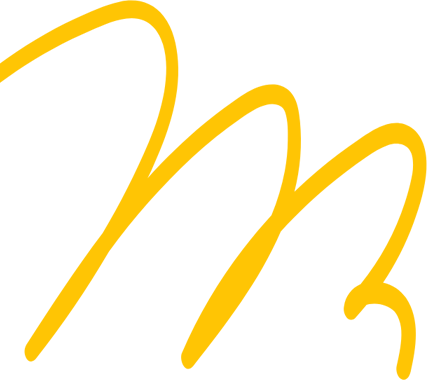Contents

- Wise's History
- Wise's Blogging and Content Strategy
- Wise's Guerrilla Marketing Campaigns
- Wise's Website and Conversion Rate Optimisation
- Wise's SEO Strategy
- How Can You Replicate Wise's Digital Marketing Strategy?
- More Marketing Deep-Dives
- What to Read Next

Get Weekly Marketing Tips
Join 30,000+ marketers and get the best marketing tips every week in your inbox
The aim of fintech company Wise, formerly known as TransferWise, is simple — make international money transfers cheaper.
But how do you stand out in a market with hundreds of banks and financial services to choose from?
This article looks at how Wise became so successful in a crowded space and our tips for replicating their success.
We’ll be covering:
- Wise’s History
- Wise’s Blogging and Content Strategy
- Wise’s Guerrilla Marketing Campaigns
- Wise’s Website and Conversion Rate Optimisation
- Wise’s SEO Strategy
- How Can You Replicate Wise’s Digital Marketing Strategy?
Wise’s History
Wise was started by two friends who had the same problem — they were being paid in one currency but needed to pay bills in another, in this case, pounds and euros.
They realised that their banks were charging a big markup on the exchange rate, costing way more than it should to move their money between accounts.
So they launched TransferWise, now known as Wise, a company dedicated to helping people get the best exchange rates possible.
They’ve branched out into bank accounts and cards, offering their users the ability to keep up to 54 currencies in one account.
It turns out a lot of people had the same problem with conversion rates as the founders, resulting in a $5 billion valuation for Wise in 2020, which is described as one of Europe’s most valuable fintech unicorns.
Wise’s Blogging and Content Strategy
Wise covers multiple niches on their blog, including personal finance, living abroad, travel tips and business. Here at Thinkplus, we’ve seen multiple clients have huge success because of their blog content, including;
- How we used content marketing to increase a US e-commerce store’s revenue from $463 per month to $3,030,000
- London Law Firm Sees 311% Increase in Search Traffic YoY after implementing our content strategy
Covering multiple niches related to their brand is an excellent way to use their blog as they are creating content that is not only relevant to their service but also focuses on their different customer types.
So what are the benefits of doing this?
The answer is in their blog titles.
Screenshot of the Personal Finance section on the Wise blog
Starting with the personal finance section, we can see that the titles here are well optimised for Google search queries that their customers may be searching for.
Someone searching for “How to open a Monzo account” is likely to be looking to open a Monzo account. Wise powers Monzo’s international payments, so it’s in their interest to encourage people to sign up for a Monzo account.
The second blog, “HSBC Foreign Currency Account“, fits not only someone searching to learn more about, or open, this type of account but also someone who could benefit from Wise’s international money transfer services.
The final blog, “How to close a NatWest bank account“, could be filling a gap in search — banks may not want to make it easy to find out how to close your account with them.
As a person trying to close their current bank account is likely to be looking for a new bank, Wise uses a call to action, proposing themselves as “a money-saving alternative to banks”, and explaining why their multi-currency account and Wise debit card are a great alternative.
Screenshot of a Wise call to action
If a searcher who isn’t quite ready to convert yet lands on this page gets the help they need, they are more likely to remember Wise in the future when they are ready to convert, so Wise is covering all bases with this type of content.
Screenshot of the Living Abroad section on the Wise blog
The living abroad section on the Wise website also covers topics that could be useful to those moving abroad. All three of the above blogs, “Paying property tax in Italy? Here’s your 2021-2022 guide“, “Selling property in Spain: A complete guide“, and “How to pay road tax in the UK“, all aim to help the reader with an issue they might face while living abroad.
As with the personal finance blogs, these blogs have been written to help a section of their target audience.
In this case, Wise is aiming to reach potential customers who are moving abroad and may need international money transfer services. If they are making searches about moving abroad, it’s likely they’d benefit from Wise’s services.
In the “Selling property in Spain” guide, there’s a call to action in the first few paragraphs explaining that those selling properties in Spain can get their money back to the UK using Wise to save them money.
Is your marketing underperforming?
Request a free website and marketing review and our team will tell you how to improve your marketing.


If you’re stuck with writing your own CTAs, our ultimate call to action guide will help you get started.
Wise has identified that those selling property in Spain who are also English speakers (hence why the blog is in English) face the problem of high exchange rates and fees when they sell properties in Spain.
If someone is searching for guides on how to sell properties in Spain, it shows that they are likely going to do so soon and are likely looking to get the best deal on their international transfer once the property is sold. This makes it the perfect type of content for Wise to share and the perfect place to promote their international transfers.
Screenshot of a call to action in a Wise blog
Wise’s Guerrilla Marketing Campaigns
In Wise’s early days, they were no stranger to guerrilla-marketing tactics.
Because the founders set up Wise to solve a problem that they realised was impacting a lot of people who would likely be outraged if they knew the truth about exchange rates and the cost of international transfers, they played on that to attract customers to their low-cost alternative.
This was a fantastic way to stand out against well-established banks and financial services that Wise’s ideal customers had possibly been with for years.
What is Guerrilla Marketing?
Guerrilla marketing describes unconventional marketing campaigns that drive publicity and brand awareness by evoking surprise, shock, excitement or intrigue.
Hidden Bank Fees are History
Wise’s first guerrilla marketing campaign was a play on words using currency to spell out a certain word. This campaign focused on the feeling you might get when you realise you’ve been paying more than you should to exchange a currency or move funds abroad.
Photo of a Wise advert in London
So, did this initial campaign work, despite its nature?
Apparently, in the space of four months around this ad campaign, they doubled the volume of money transferred using Wise from £125 million to £250 million.
This may only be partly due to this marketing campaign, but it’s important to note the correlation between this campaign and the increase in transfers.
Daylight Robbery – What would you do?
Wise doubled down on the guerrilla marketing tactics, keeping the goal of exposing banks for charging high fees while promoting Wise’s lower fees.
Wise also tried jumping on current trends. Back in 2015, it was popular on YouTube to create “social experiment” videos, where actors would create a situation in public; for example, one actor drops their wallet, and the other actor picks it up and walks away.
The aim of this type of video was to see how the general public would react if they saw these situations. Wise took the opportunity to create social experiment videos on YouTube that tied in with the themes of money.
If done right, jumping on current trends can work in favour of your brand and generate digital PR. If you’re wondering where to get started with digital PR campaigns, check out our digital PR guide.
The Exchange Rate Race — Lego Challenge
Jumping on another meme, Wise created an ad where runners representing different banks raced each other across Lego bricks.
Lego bricks being painful to step on is apparently such a common shared experience that it became an online meme. Wise used this as a euphemism for how paying more for currency exchange or international bank transfers can feel painful.
They also represented how much different banks charged for these services by making the lego brick “obstacle course” longer for those who charged more, with Wise’s being the shortest.
https://www.youtube.com/watch?v=iybKYj3OoXQ
The sentiment in the comments is that this is a good ad, with others being unsure if speaking badly of competitors in this way is allowed.
Screenshot of comments from the Wise Lego advert
Judging by the number of views compared to the number of comments and likes on the video, we can assume that Wise chose to put an advertising budget behind this video, as the views are very high compared to the user engagement on the video.
Pay per click advertising, or PPC, is not just for big-budget businesses. In fact, SMEs can get a good return on investment from PPC.
The World’s Most Confusing Souvenir Stand
It looks like Wise’s last tongue-in-cheek campaign was in 2018 when they set up “the world’s most confusing souvenir stand” outside of the European Parliament to raise awareness of a vote happening to decide whether banks needed to be more transparent about how much cross-border payments would cost.
We haven’t seen any more guerrilla marketing from Wise since then, but this is common when a company reaches a certain size. They begin to scale back on more divisive marketing tactics once they are well established as a brand. We saw the same thing happen in our Brewdog digital marketing deep dive.
Wise’s Website and Conversion Rate Optimisation
There are a lot of good things to say about the above-the-fold section on the Wise website.
The above-the-fold section is everything you see when you arrive on the homepage before scrolling down. This is the first impression people will get of your website, so you need to make sure this space is optimised.
Let’s start with Wise’s above-the-fold CTA.
Screenshot of the Wise website
On the right, we have an international transfer calculator, which is straightforward to use and shows live rates, the cost of transfer and how much the recipient will get in their own currency.
It’s very clear and accessible for everyone, no matter how experienced they are with transferring money.
If you’re looking for the perfect lead magnet for your website, you can check out five of our favourites in this video.
Another great part of this tool is the CTA’s at the bottom. The one in blue, “compare price“, is for those who know they need to transfer money internationally but aren’t quite ready to convert yet and might need to do some more research before picking a provider.
Screenshot of the price comparison section on the Wise website
By clicking the “compare price” button, you are taken further down the homepage to the price comparison table. By including this table further down the page, those who didn’t click the CTA and instead scrolled down to learn more will still be able to see the table, which might help to convert them.
The green CTA, “Get started“, is for people who want to get started with their transfer right away, and takes them to the sign-up page for a Wise account.
Screenshot of the Wise transfer calculator
This is a great way to cater to two audiences at different stages of their customer journey without over-complicating the call to action. Going with only “Get started” could be off-putting to customers who are not ready to convert just yet. Just using “Compare price” could feel redundant to those who don’t want to compare and just want to go ahead with their transfer.
Think about the type of people visiting your website and what stage of the sales funnel they might be at, and see if you can include a tool or multiple calls to action above-the-fold on your homepage.
Don’t try to add more than two, or things will start to get complicated, and visitors won’t be able to find what they need.
On the left of the above-the-fold section is a promotion of Wise’s international bank account. It gives you the option to watch a video by clicking the blue play button. The headline “the 6x cheaper international account” clearly tells the visitor what this account and bank card are for.
Screenshot of the Wise international account promotion
Although this is a great headline, there isn’t a clear call to action for this service. As it is right next to the calculator, visitors could become confused and think the two are connected and that by pressing the “Get started” button, they will end up signing up for a Wise bank account rather than just creating an online account they can use to make a transfer.
Further down the page, Wise includes a very clear and easy to read section explaining the services they offer, which are tailored to the country you are searching from. If you want to look at services in another country, you can easily change the country using a drop-down menu.
This section is extremely clear, and each service has a call to action tailored to the service, rather than something generic which is the same across all services.
Screenshot of Wise’s services
Get to the top of Google
Learn how to get your website to the very top of Google (and turn that traffic into revenue).

Wise’s SEO Strategy
With finance and fintech being such a competitive industry, Wise needs a strong SEO strategy to help them appear above their competitors in search.
According to SEO tool Semrush (which you can try for free for 30 days using our exclusive partner link), Wise is getting over 42 million monthly organic global visitors from search alone. This is an estimate, but regardless, we can still see that they are getting a lot of traffic.
Screenshot of Wise’s traffic and backlinks in Semrush
They also have 13 million backlinks from 24,000 domains, likely in some part due to their content and guerrilla marketing strategies, which are likely to have generated some digital PR.
In terms of keywords, they are ranking on the first page of Google for terms such as “dollars to pounds“, which is estimated to be providing 3% of their traffic. They’re also still ranking highly for their old brand name, Transferwise.
Screenshot of Wise’s top keywords
Most of their high-traffic keywords are along these lines — searches for conversion rates from one currency to another. Wise has targeted these keywords with currency conversion calculators specific to the most popular currency-conversion search terms.
Screenshot of the USD to GBP conversion calculator
It would be interesting to see how well this traffic converts once the user is on the site or if they are just using Wise’s currency converter and then leaving the site.
They have included two great calls to action, again for different members of their audience, just like they did on the homepage.
The one in blue and white, “Track the exchange rate“, takes the visitor to a section where they can input their email and get alerts when the exchange rate is at a specific rate. This brings them into the Wise ecosystem even if they’re not quite ready to convert.
They also include the “Send money” call to action for those looking to send money right away.
We can assume these calculators, combined with the SEO strategy, have been converting fairly well, considering the $5 billion company valuation.
Struggling to get all your marketing done?
Download our marketing priority planner and get your marketing back on track.

How Can You Replicate Wise’s Digital Marketing Strategy?
Now we’ve looked at the key elements of the Wise marketing strategy, let’s look at how you can replicate their success.
Content Marketing
Think about who your target audience is made up of and the different stages of the buyer journey they may go through before making a purchase with you.
If you have multiple target consumers, it could be well worth creating different blog sections on your website that cater to those audience types. Wise does this by targeting travellers, businesses and those moving abroad.
Regarding the buyer journey, think about the types of questions customers will have in the run-up to purchasing with you, and then create great content that answers these questions.
Guerrilla Marketing
Full-blown guerrilla marketing might not be for everyone, but there are still some great lessons here.
If your company stands for a cause or was founded to solve a specific widespread problem, don’t be afraid to shout about that.
Conversion Rate Optimisation
Including a simple, free tool such as a calculator or quiz on your homepage can be a great way to lead visitors towards a purchase. Once they have invested time into a quiz or using a tool, they are more likely to make a purchase or feel a stronger affinity towards your brand if the tool helped them.
SEO
Conduct keyword research to better understand the types of searches your ideal customers make before they convert. Create landing pages that specifically target these searches, especially if you can offer a tool or calculator to help them with their search.
If you’re new to keyword research, check out our guide on how to do keyword research like a pro.
More Marketing Deep-Dives
Check out some more of our marketing deep dives:
- Airbnb: How To Replicate Their Digital Marketing Strategy
- lululemon’s Digital Marketing Strategy
- Brewdog’s Marketing Strategy — A Digital Marketing Deep Dive































